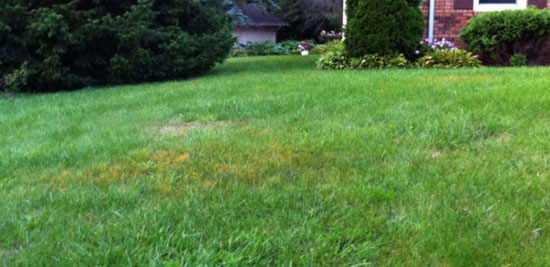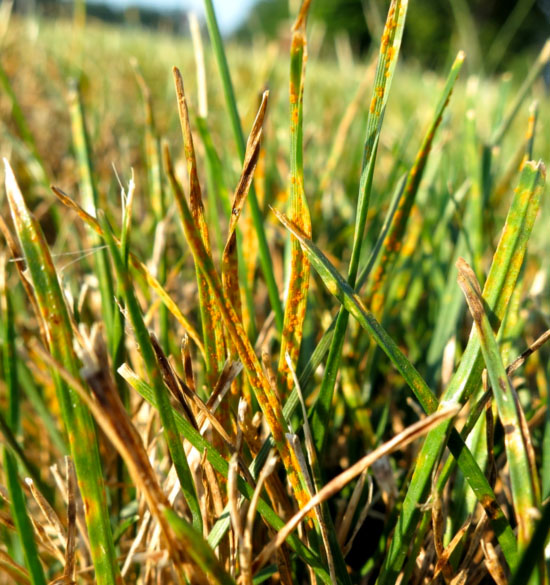Issue 14, August 26, 2013
Turfgrass Rust
Turf rust outbreaks are commonly seen in late summer to early fall as moderate temperatures and long evening dew periods occur. Rust diseases are most severe on slow growing turf stressed by drought, summer heat, low-fertility, shade or compaction. From a distance, severely infected turf appears thin and tinted yellow, red, or brown. Closer inspection will reveal individual blades with numerous yellow orange pustules. Orange spores produced by the pathogen are easily picked up by shoes, pets or anything in contact with rust affected grass blades.

Turfgrass affected by rust.

Close-up view of turf blades with rust pustules.
On established turf, damage from rust is mostly cosmetic. A variety of cultural practices are usually sufficient to control the problem. Additional fertilizer can be applied to problematic areas to help stimulate growth and allow the turf out-grow the rust’s relatively slow infection cycle. Mowing will remove infected tissues before they can be problematic. Irrigation may also be needed to reduce drought stress. However, note that leaf wetness is required for infection. To avoid promoting infection, it is important to water early in the day and allow the turf to dry before night. Also, avoid frequent, light irrigation, but water turf infrequently and deeply. Several fungicides are available and effective against rust. However, they are usually not warranted on established turf. (Travis Cleveland)
Author:
Travis Cleveland